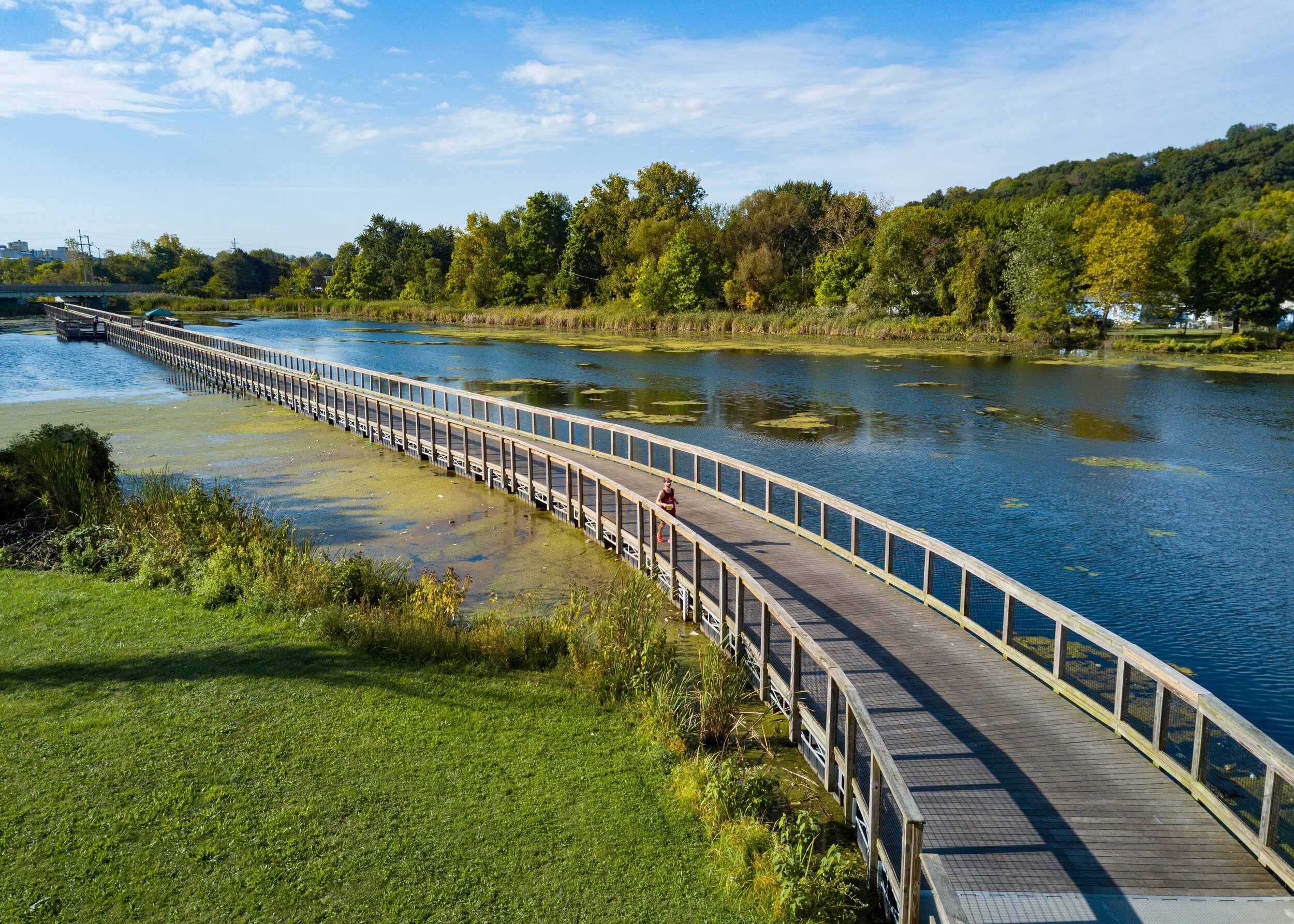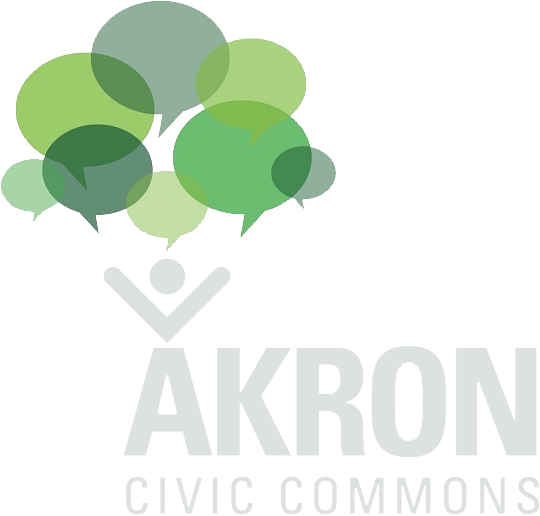
About Akron Civic Commons
Remembering who we are to inform the story of our future—together.
In a Midwestern, midsized city, one tends to get stuck in the middle, the space between.
Not urban, but certainly not rural. Not a big city, but definitely not a small town. Not cutting edge, but not backwards. So often defined by what we are not, we tend to forget to remember what we are.
Starting with History
The Ohio & Erie Canal runs through Akron. It was a transportation innovation that built the city as a place for commerce and industrial innovation as we became the center for the cereal, mower and reaper industries and ultimately, the rubber industry. An urban plan that transformed the city from 1827 to 1913 making us the place to pass through on your way to somewhere else. A place to pass through.
The flood of 1913, in combination with rail and automotive advances, supplanted the canal as our means to greatness. We caught the next wave. We put rubber in our veins. Between 1910 and 1920, Akron was the fastest growing city in the country. Our population tripled with a wave of Appalachian immigrants and African-Americans migrating from the South who clamored for work in the rubber industry. By World War II, more than 70,000 people were employed in the Akron area rubber companies, making us the Rubber Capital of the World. We championed the tire and its automotive culture, building 50 percent more highway per square mile in our county than the Ohio average. While Akron certainly benefited from the industrial growth of the rubber and tire industry, there was a tremendous cost to the environment, as our land and waterways, including the Ohio & Erie Canal and Summit Lake were abused by pollution. We were excellent at making things to get you on your way.
By 1970, the effects of redlining and suburban sprawl shifted people and economic drivers away from the city, begging us to reinvent ourselves. We used our rubber industry dominance to create 21st century opportunities in biomedical, plastics and metal research, and advanced manufacturing.
But that is history. It’s time for a new story.
Writing a New Story
Just as geography and the Ohio & Erie Canal defined our community, it is shaping our future as the public spaces and neighborhoods along this historic waterway and multi-use recreational trail, are being revitalized as excellent places to spend time, rather than pass through. By focusing on a three-mile stretch of the Ohio & Erie Canal and Towpath Trail, from our downtown center city to Summit Lake Park, we are seeking to build relationships with all members of our community, because the people of Akron are our greatest source of strength. This three-mile corridor connects our highest salaried and least diverse downtown community with our highest impoverished and most diverse community at Summit Lake.
We are seeking to build a city for all people, regardless of their race, income, gender or age, through the development of great public spaces where all citizens can gather, exchange ideas, play and build relationships with one another.
The work of the Akron Civic Commons is to reestablish our way of doing business, our way of city building, our way of valuing people. We aim to instill collaborative, cross sector inclusion as a best practice for problem solving and planning. Through a ‘test and learn’ approach we aim to demonstrate the value of creating delight, and the priceless joy of sharing valuable space. Our projects will demonstrate that by adhering to the values of Reimagining the Civic Commons—environmental sustainability, economic integration, civic engagement and value creation—we can create great value for Akron. Through this innovative process, we seek to elevate the conversation, creativity, and engagement of the city and demonstrate to all that Akron is much more than a space in between.
Akron’s demonstration focuses on three sites and the connection among them:
Civic Gateway
Located on the northern end of downtown, the Civic Gateway is comprised of a variety of recreational and social amenities, including the Akron Civic Theatre, Lock 4 Park, Cascade Plaza and the Akron-Summit County Public Library. Design and programming across these assets reimagines the Civic Gateway as the animating civic heart of downtown, connecting thousands of office workers in nearby buildings with downtown and neighborhoods residents.
Summit Lake
Once the “million-dollar playground,” Summit Lake Park is reimagined as a platform for activities such as bicycle and canoe share, community gardens and cultural programming to attract local residents and trail users from throughout the region. These investments shift perceptions about and increase the use of the lake while improving ecological conditions, all of which generate new value for the area.
Ohio & Erie Canal Park
Strategically located along the Towpath Trail between downtown and Summit Lake, Ohio & Erie Canal Park is a neighborhood with a diversity of residents including renters, homeowners and senior citizens. Through wayfinding, programming and investments in infrastructure, Ohio & Erie Canal Park will become a welcoming local gathering spot and an integral connection between Summit Lake and downtown.

These assets together create a chain, all connected by a linking, equalizing asset: the Ohio & Erie Canal Towpath Trail.
By testing ideas through creative prototyping, Akron is seizing the opportunity to dream big and fail fast, all in service of achieving success sooner. These projects offer a new model for community engagement, honoring all through the co-creation of a civic commons that brings citizens together as part of their daily lives.

